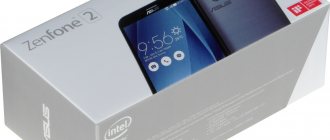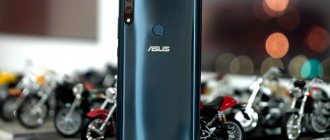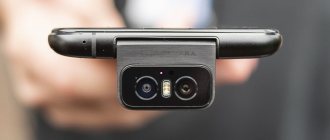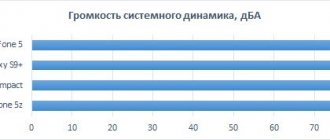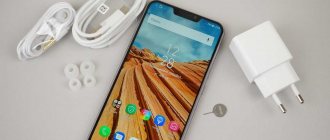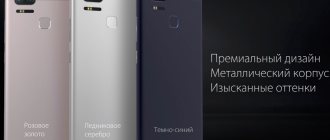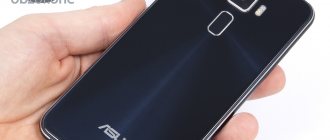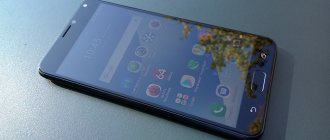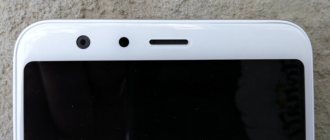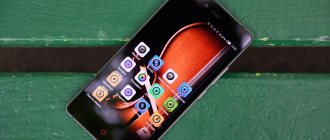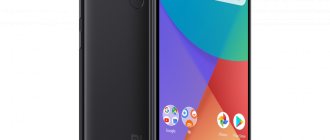ASUS ZenFone Max Pro (M1) occupies a special place among other Zenphones. It doesn't stand out because of the world's most powerful processor or bold design. For this purpose, there are other models in the ZenFone family, for example, ASUS ROG Phone, recently presented at Computex 2020. The highlight of ASUS ZenFone Max Pro (M1) is completely different. The smartphone runs pure Android 8.1 Oreo, is equipped with a capacious 5000 mAh battery and has a high-quality display.
Specifications ASUS ZenFone Max Pro (M1)
Display
: 6 inches, 2160x1080, 18:9, IPS, brightness 450 cd/m^2, contrast 1,500:1
Processor
: Qualcomm Snapdragon 636, 8 cores, 64-bit (4x Kryo 260 1.8 GHz + 4x Kryo 260 1.6 GHz)
Graphics
: Qualcomm Adreno 509
RAM
: 3 or 4 GB LPDDR4X (depending on version)
Data storage
: 32 or 64 GB (depending on version)
Memory card
: MicroSD, up to 2 TB
SIM card
: 2x Nano -SIM
Cameras
:
- Front
: 8 MP, f/2.0 viewing angle 85°- Rear main
: 13 MP, HDR, phase detection autofocus, LED flash- Rear additional
: 5 MP, background blur functionVideo recording
: 720p/1080p/4K
Cellular
: 2G/3G/4G,
Wireless networks
: Wi-Fi 802.11a/b/g/n, 2.4 GHz, Bluetooth 5.0
NFC
: Yes
Navigation
: GPS, AGPS, GLONASS, BDS
Sound
: 1 speaker (5-magnetic with NXP smart amplifier)
Microphone
: Dual built-in microphone with noise reduction technology
Battery
: 5,000 mAh
Operating system
: Android 8.1 Oreo
Dimensions
: 159 x 76 x 8.45
Weight
: 180 grams
Modification price 3/ 32 GB
: 13,990 rubles
Modification price 4/64 GB
: 15,990 rubles
Screenshots of CPU-Z
⇡#Communications and wireless communications
Zenfone Max Pro (M1) uses two nano-SIM cards, both slots work with LTE category 13: download speeds reach 400 Mbps. All the necessary ranges are there.
Almost all wireless modules are in place: Bluetooth 5.0 and Wi-Fi 802.11 b/g/n (2.4 GHz only), as well as the already mentioned NFC. There is only an infrared port for working with household appliances.
| ASUS Zenfone Max Pro (M1), GPS Test results | ||
The navigation module works with GPS (A-GPS), GLONASS and BeiDou systems. There are no questions regarding the speed of connection with satellites or the accuracy of location determination - Zenfone Max Pro (M1) can be safely used as a navigator.
Packaging, delivery set
The smartphone comes in a small, discreet box.
Packages of a similar size and format are often found at Zenfons, so we can say that everything is done in the corporate style. Inside, in addition to the phone itself and the obligatory “papers,” there is a power supply, a tightly braided Micro-USB cable, a headset with spare ear pads, and a “clip” for the SIM card tray. Considering the cost of the smartphone, this set of accessories can be called expanded. The sound quality of the included headset is very high – even those with sensitive hearing will be pleased. Well, replaceable ear pads will help any user achieve maximum comfort. In addition, they are made of soft silicone, which will provide good sound insulation due to their tight fit.
Appearance
| Weight | 180 g |
| Size | 159 x 76 x 8.45 mm |
| Protection | No |
Three colors. Black, blue, silver.
You can't call it fluffy. You have to pay for a metal case. In grams.
The sizes are typically modern. Manufacturers persistently call such smartphones “frameless.” Like, anything less than five millimeters is not considered a frame. In fact, the framework is quite noticeable, statistically average. Narrow sides, top and bottom - noticeably wider.
The materials are good. This is exactly the case when a smartphone is extremely neat. On the front there is glass with an oleophobic coating. Everything else - back and sides - is matte.
The degree of slipperiness is average. A cover is recommended but not required. Max is not noticed trying to slide off the table.
Traditional boring details
Above the screen everything is as usual. Front camera with flash, speaker, light and proximity sensors. There's also an LED here.
Below the screen is empty.
Back surface. The fingerprint scanner is in its rightful place, i.e. in the center of the upper half of the body. The dual camera unit and the flash perched next to it are shoved into the very, very corner. The cameras protrude a little, but so slightly that the smartphone is able to lie on its back and not wobble.
Top edge. There is only a microphone for noise reduction.
Bottom. Micro-USB, speaker, main microphone, 3.5 mm audio output.
Right side. Power button, double volume button.
Left side. Card tray. The tray is correct, you can put two Nano-SIM and a Micro-SD memory card at the same time.
Design
ASUS ZenFone Max Pro (M1) is designed in a classic modern style. Its screen occupies almost the entire area of the front panel, which is covered with a single 2.5-D glass with curved edges.
Above the screen there is a standard set of sensors: proximity and light. In addition to them and, of course, the dynamics, there is a selfie camera with flash. The latter almost completely merges with the body of the smartphone - exactly until you need it to take a selfie in a dark room.
The back side of the smartphone is completely made of metal. Only its upper and lower edges, where the ASUS ZenFone Max Pro (M1) antennas are located, turned out to be plastic.
On the back of the phone there is a fingerprint scanner, a camera module and an LED flash - everything is as you are used to.
The arrangement of elements on the left and right sides of ASUS ZenFone Max Pro (M1) is standard for modern smartphones. On the right is the Power button and volume keys, and on the left is a tray for SIM cards and memory cards. The tray of ASUS ZenFone Max Pro (M1) turned out to be three-seater. You can connect two Nano-Sim format SIM cards to your smartphone and at the same time a memory card with a capacity of up to 2 TB. You don't have to choose between a memory card and a SIM card.
The Micro-USB connector and the 3.5 mm audio jack for the headset are in their usual place - on the bottom edge of the smartphone. Here, on the right side of the bottom edge, the speaker is located.
Appearance
“An elegant all-metal body weighing only 180 grams,” is how the appearance of Asus ZenFone Max Pro is described on the manufacturer’s official website. At the same time, marketers are getting a little carried away. In real life, a smartphone does not create a “wow” effect. Formally, there is indeed metal in the design - it covers the “back” of the case, but the frame of the device is made of painted plastic. Oddly enough, it perfectly resists damage, but abrasions appear on the metal over time.
The body shape is ergonomic and grippy. The assembly is good. With a thickness of 8.45 mm, the device can only be called elegant with a stretch, but we’ll forgive the marketers for this liberty. The thickness of the case cannot be considered a disadvantage. Rather, it is a necessary evil that makes it possible to fit a capacious battery inside.
The appearance of ZenFone Max Pro is designed in the spirit of the latest trends. The vertical block of dual cameras on the rear panel is complemented by an LED flash. Just below there is a recess for the fingerprint sensor. The circle is small, but how convenient it will be to use depends on the length of your fingers, everything is individual. The sensor responds quickly and without delay.
Engineers placed mechanical keys on the right side of the device. The SIM card tray is inserted on the left. The upper edge is not occupied by anything other than the microphone of the noise reduction system. Most of the elements are on the bottom edge of the device: conversational microphone, 3.5 mm jack, Micro-USB, speaker. Bicycles were not invented here; the layout, one might say, is classic.
A couple more design features: an LED notification light and a soft front flash. They are located above the screen, close to the earpiece and the light/proximity sensor unit. The navigation buttons are on-screen, so there is nothing else on the front panel except the screen.
Screen
The first thing we always pay attention to when we pick up a new smartphone for the first time is its screen. It is the color rendering quality of the display and its size that largely determine the first impression. ZenFone Max Pro (M1) received a 6-inch ISP screen with a maximum brightness of 450 cd/m^2, a contrast ratio of 1,500:1 and NTSC color space coverage of 85%. The screen has thin frames, and it takes up 83% of the entire front panel.
The smartphone display does not have a “monobrow”, “cutout”, or other design tricks - it is rectangular. Its resolution is 2160x1080 pixels and the aspect ratio is 18:9. As we already wrote, the screen diagonal of ASUS ZenFone Max Pro (M1) is 6 inches, but the body dimensions of the Max Pro (M1) correspond to a 5.5-inch smartphone. Therefore, in order to fit a 6-inch display into such dimensions, we had to pull it “up”, simultaneously changing its resolution and aspect ratio. By the way, it is more convenient to watch widescreen video on such a display than on a standard one.
Review of Asus Zenfone Max ZC550KL - maximum autonomy
Until recently, the niche of smartphones with large batteries was occupied exclusively by inexpensive Chinese brands such as THL or Oukitel. But as you know, demand creates supply and Asus decided to release its long-lived device, which was given the name Zenfone Max. Moreover, they did it so quietly - without unnecessary pathos and intrusive advertising - that the release of the model was simply not noticed by many. And it was completely in vain, because in fact it turned out to be one of the best representatives of smartphones, the main feature of which is the operating time on a single charge. The model cannot be called high-performance; those who like to play can block their view at this point and not waste time. in the smartphone is tailored to ensure maximum operating time on a single charge.
: economical processor, low-resolution screen and 5000 mAh battery.
But the smartphone is interesting not only for this, as usual, Asus relied on design and materials - a recognizable Zenfone-style design, a practical back cover, heavy-duty glass Gorilla Glass 4. The smartphone also boasts a good 13 megapixel camera with a Toshiba sensor and optics from Largan with laser autofocus, and the front camera is not entirely simple - a wide-angle lens (Wide-angle 85 ˚) will allow you to take a panoramic selfie covering an angle of up to 140 degrees. The disadvantages include overpaying for the brand - the price is higher than that of similar smartphones from less famous competitors. But holding a smartphone in my hands, I understand why this is so. Asus is simply a pleasure to use - the manufacturer's attention to detail, sleek design, quality of materials from which the smart device is made, its own software, etc. I have been using the smartphone for quite a long time and, of course, small flaws and features have been revealed that are not noticeable during a cursory examination, and I will definitely tell you about them. In the meantime, I suggest you familiarize yourself with the detailed technical specifications:
CPU
: quad-core Snapdragon 410 with a clock frequency of 1.2 GHz
GPU
: Adreno 306
Memory
: RAM - 2Gb LPDDR3, ROM - 16GB eMMC Flash (there is an expansion slot up to 64Gb)
Screen
: 5.5inches, HD 1280×720, IPS.
The screen is protected by Corning Gorilla Glass 4. The screen has an oleophobic coating. Supports operation with gloves. Battery
: Li-Polymer 5000 mAh
Camera
: Main - 13 Mp (F2.0 Aperture, laser focusing, dual LED flash with LEDs of different shades), Front - 5 Mp (F2.0 Aperture, wide-angle lens Wide-angle 85 ˚, ability to shoot panoramic selfies up to 140˚)
Sensors
: Accelerator, E-Compass, Proximity, Ambient Light Sensor, Hall Sensor
Network
: 2G: GSM - 850MHz/900MHz/1800MHz/1900MHz, 3G: WCDMA - 850MHz(5)/900MHz(8)/ 1900MHz(2) /2100MHz(1), 4G: FDD-LTE - (CN/IN version Only) 2100MHz(1)/1800MHz(3)2600MHz(38)/1900MHz(39)/2300MHz(40)/2500MHz(41 )
Navigation
: GPS, GLONASS, AGPS & BDS
Connectivity interfaces
: WLAN 802.11 b/g/n, Bluetooth V4.0+EDR +A2DP, Micro USB (with OTG support)
Dimensions
: 77.5mm x 156mm x 10.55mm
Weight
: 202 g
The smartphone comes in a branded box with minimal equipment, only a USB cable and a 1A charger. No films, glasses or headphones. Separately, you can find various accessories on sale; they are already on sale for free: tempered glass of different qualities, a smart case in the form of a book, silicone and plastic bumpers, replaceable back covers of different colors. There are also some basic spare parts already on sale, such as a display or touch screen. Over time, batteries will also appear, since they can be easily found on Ali and other sites for other Zenfone models.
When we first met, I was immediately impressed by the large screen; the images on it look very colorful and rich. With a 5.5-inch diagonal and HD resolution, I expected fairly large pixels, but nothing like that is observed - the picture looks excellent, only slightly inferior to Full HD in detail, and even then only in direct comparison. The image tones are shifted to warm tones; there are settings in the settings for finer adjustments. Viewing angles are high, as is maximum brightness. Thanks to ASUS TrueVivid Full Screen Lamination technology, screen content is clearly readable even under bright sun. The screen is protected by durable glass CORNING® GORILLA® GLASS 4, you can verify this by going to the official website https://www.corninggorillaglass.com/. By clicking on the See Devices with Gorilla Glass 4 menu item and selecting the model range of Asus smartphones, we will see Zenfone Max in the list. This glass is the latest version of the protective display coating from Corning developers. It's twice as strong as the previous version in the drop test, has 2.5 times the residual strength, and is 85% more durable in daily use. But no Gorilla can save you from scratches during active use, so I would recommend purchasing and using an additional protective glass. Another nice feature is the high-quality oleophobic coating: fingerprints reluctantly linger on the surface of the screen and are very easily erased. The tactile sensations from operating the screen are the most positive; the finger glides easily across the surface. The touch screen responds to the slightest touch and supports operation with gloves, which will be important in the cold season. It recognizes up to 10 simultaneous touches. The touch keys under the non-backlit screen are located in a slightly unusual sequence, but this does not cause any inconvenience - I got used to it almost immediately. There is a three-color event indicator near the front camera, but it is not possible to customize it to your preferences using standard methods. The system has firmly established that a missed event is green, a dead battery is red, and the charging process is orange.
The design of the smartphone is both simple and recognizable. Asus adheres to one style - streamlined shapes, rounded edges, a metal insert under the buttons with a typical Zenfone texture, a large audio speaker grille and other recognizable elements. Nevertheless, the model also contains innovations that are unusual for the company. The back cover is made of plastic with a leather-like texture. This is a practical solution, because thanks to such a surface, the device lies confidently in the hand and does not slip, and it looks aesthetically pleasing. In addition, keeping such a surface clean is very simple.
The smartphone is well assembled and feels complete. The back cover fits very tightly on the latches and does not squeak or squeak when squeezed. The frame of the smartphone is plastic and painted in golden beige color, which only emphasizes the overall design. The volume and lock control keys have a proprietary notch in the form of circles and are placed on the right side. The headphone jack is located on the top edge, the micro usb connector is on the bottom.
Despite its rather large dimensions, it fits well in the hand and is very comfortable to use. I am more impressed by smartphones with a screen diagonal of up to 5 inches, but I liked the Zenfone Max - it doesn’t feel like a shovel and is quite comfortable to use. The only drawback is the weight, which is 202 grams and it will be uncomfortable to wear in shorts in the summer. But here everyone chooses for themselves: either thin and light but with a charge for a maximum of a day, or larger, but with a good battery.
I decided to hide additional photos conveying the subtleties of the design under the spoiler so as not to overload the review.
Additional Information
The back cover sits tightly on 17 latches and is quite difficult to remove: by hooking it in a special recess with your fingernail, you need to walk around the perimeter of the entire case. It will not be possible to remove the cover by unscrewing only a couple of latches. By looking at the cover you can see the battery, which can be replaced if necessary by slightly disassembling the smartphone. At the top there are two full slots for micro SIM cards. There is a separate memory expansion slot, the declared supported volume is up to 64Gb. In the upper part, in the center, is the main camera lens; it protrudes a fraction of a millimeter above the body, but the glass itself is slightly recessed in the decorative ring, so it does not suffer when in contact with the surface. On the left is a dual LED flash. LEDs of different shades provide a more natural spectrum of illumination when shooting at night. The power is sufficient for shooting in the dark at short distances. To the right of the lens there is a “laser illumination” for accurate and fast focusing.
Let's move on to the most interesting part - the battery. The first thing I didn’t like about the smartphone was the long charging time. With a battery capacity of 5000 mAh, it lasts about 6 hours, which makes it impossible to “recharge on the go.” And the point here is not at all in the included charger, which is limited to a current of 1A - when connecting any other charger with a higher current, the picture does not change, the smartphone is not able to accept a current greater than 0.96A. Therefore, it is best to charge it overnight. The battery capacity was checked using a tester and it fully corresponds to the declared one. I didn’t expect anything else from Asus, it’s not the level to cheat with the characteristics. The battery is truly impressive - the smartphone can easily withstand 3 days of high load, and with more economical use it provides 5 - 7 days of operation on a single charge. Of course, the operating time depends significantly on how you use the smartphone, but during daylight hours it is almost impossible to discharge it, no matter how hard you try. Let me give you a few examples: in playback mode of an HD video on YouTube at maximum screen brightness, he was able to last 15 hours and 17 minutes! In addition, at night my Internet went down and YouTube stopped playing and I only resumed it in the morning. And this is with a load on WiFi, and if you play video from the smartphone’s memory, the continuous playback time is more than 20 hours at maximum brightness. When the brightness is reduced from maximum to a comfortable level, the time increases significantly.
When reading web pages, the operating time is up to 32.5 hours of continuous operation, and the talking time (on the 3g network) is up to 37.6 hours. These indicators were not verified by me personally, but were taken from the official website, but I am convinced that the real indicators will not differ too much. In reality, it looks like this: I use a smartphone all day, when the total screen time for the day is more than 4 hours, and the battery indicator shows another 70% charge. Good survivability Synthetic tests also show this, for example Antutu tester scored 25398 points with maximum screen brightness. For comparison, the Oukitel K6000, which has an even larger battery capacity, was able to score only 13850. A more economical processor? Hardly. Better firmware optimization? More likely. The fact is that Zenfone Max lasts much longer than K6000.
These indicators were not verified by me personally, but were taken from the official website, but I am convinced that the real indicators will not differ too much. In reality, it looks like this: I use a smartphone all day, when the total screen time for the day is more than 4 hours, and the battery indicator shows another 70% charge. Good survivability Synthetic tests also show this, for example Antutu tester scored 25398 points with maximum screen brightness. For comparison, the Oukitel K6000, which has an even larger battery capacity, was able to score only 13850. A more economical processor? Hardly. Better firmware optimization? More likely. The fact is that Zenfone Max lasts much longer than K6000.
The battery test in Geekbench 3 was no less indicative. 6572 points and a total test time of 16 hours 25 minutes. According to this indicator, the smartphone was in the top 3, only slightly behind the Lenovo A5000 (has a smaller diagonal of 5 inches) and Leagoo Shark 1 (battery capacity 6300 mAh). But at the same time, the smartphone scored more points. And the smartphone itself can charge other devices, that is, it actually acts as a power bank! Well, for the full picture, here’s a screenshot of my use case. On the evening of April 18, I took it off the charger and used it quite actively, mostly calls and a lot of Web pages. I also listened to music on it and used the camera. He sat down with me only on April 24 in the morning, eventually working for more than 5 days.
What is the secret of such high autonomy? Everything is very simple, the smartphone uses an energy-efficient Snapgragon 410 processor in conjunction with an HD display resolution. This allows you to use battery power as economically as possible. But this is of course a double-edged sword; you shouldn’t count on high performance in this model, especially in gaming terms. Of course, a smartphone will allow you to play casual games, helping to pass the time on the minibus - but nothing more. You can, of course, play more modern and powerful games, but you can’t count on high quality textures. The same tanks sometimes lag a little in battles, so for the sake of games it’s definitely not worth taking it
. But any other applications work well. Separately, I would like to note the work of the ZenUi shell, which, despite its apparent sophistication with various effects, works very smoothly. Interfaces switch without delay, flipping through desktops is smooth, opening the phone book without noticeable delays. The amount of RAM allows you to quickly switch between open applications, video plays smoothly, both online and offline. In pages that are especially overloaded with flash, it is clear that it is a bit heavy for the processor, because they do not “toss and turn” as smoothly as we would like. In synthetic tests, the result is comparable to the budget processor MT6735, the result is at the same level. 25314 points in Antutu. Comparing the performance with the 6735, you can see that the Snapdragon 410 has a significant advantage in computing power, but is completely inferior in graphics. In Geekbench 3: 1485 in Multi-core mode and 485 in single-core mode.
Synthetic tests
Zenfone Max runs on the Android 5.0.2 operating system, but with its own ZenUi shell. In terms of aesthetics and versatility of settings to suit your needs, it is significantly superior to the stock shell. Although at first glance it may seem somewhat complicated and confusing.
And this is partly true - a large number of pre-installed applications for cleaning and optimizing the system duplicate each other, Asus has installed too much of its software, which not everyone needs: startup manager, antivirus, memory cleaners, battery economizer, password manager and other programs that are needed not everyone.
Personally, I unloaded the system by deleting and disabling those applications that I considered unnecessary. But there are undoubtedly interesting applications that will be useful to absolutely everyone. For example, a sound setup wizard. By the way, I would like to note the excellent sound
of the smartphone in headphones. Even with inexpensive headphones KZ EDR1 and Xiaomi Pistons 2, the device pleasantly surprised with its powerful and high-quality sound. Fans of sharp bass will be pleasantly surprised, and in general the sound is head and shoulders above most modern smartphones. So, the sound setup wizard allows you to customize the sound as much as possible for a specific task by turning on the music mode - the sound becomes deeper and more powerful. There are frequency boosts and an equalizer, which has both preset modes and completely manual settings.
I also really liked: an energy saving program, a file manager, a program for creating videos and slideshows, as well as a weather widget.
In addition to well-thought-out interfaces and an advanced shell, the smartphone performs its most basic functions well. It often happens that a smartphone with good characteristics is spoiled by an obscene speaker, which at once negates all its advantages. And often even fine adjustments in the engineering menu do not bring the desired result. Asus did not fall flat on its face by equipping the smartphone with a high-quality and loud speaker. They even overdid it a little. By setting the volume to maximum, you can not put your smartphone to your ear, but talk as if through a speakerphone. True, at maximum volume the speaker rattles slightly, but if you turn down the volume by at least one notch, the sound becomes clear. The microphone is sensitive and “on the other end of the line” you can be heard very well. There is a second microphone for noise reduction, its performance is satisfactory. Further, the Internet - the Chinese version is limited to certain frequencies in 4G networks, so if this is an important point for you, carefully study the frequencies on which the operators operate. But 3G uses the widest possible range of frequencies, which are relevant both in Russia and Ukraine. Wifi works fine, the apartment has reliable reception and download speed: 20-30 megabits through 2 walls and up to 50 megabits in a room with a router. GPS navigation didn’t disappoint either; until recently it was Qualcomm’s specialty, but now MTK has caught up with them. I’ll just note that the navigation worked properly, the cold start took 1 minute and 8 seconds, which can be seen in the screenshot below. A minute later, 15 satellites were found, 11 of them had an active connection. The positioning accuracy is 4m, the connection is stable on the road. A magnetic compass helps with navigation quite well, especially on foot.
Another positive feature of the model, in my opinion, is a good camera. In most of the “long-livers” that I held in my hands, the camera was a frankly weak point. While most Chinese smartphones had no problems with subject photography and macro photography, only a few cope with landscapes. Zenfone Max takes pretty good pictures in almost any conditions (with the exception of low light, where noticeable noise appears." The proprietary camera application has a huge number of settings and modes, but even if you are too lazy to understand all this, you can count on good photos in "auto" mode. In addition, the camera boasts an instant laser focusing system, triggered in just 0.03 s, which helps to obtain clear images even in adverse conditions. There are a few examples of photographs taken by the device in "auto" mode, i.e. pointed and filmed. Originals.
More photos
I was also amazed by the panoramic shots - no matter how you move the camera, no matter how much your hands shake, the stitching always happens perfectly. Even if objects move and trees sway, the photo comes out clear, without blur! (The panorama is reduced in size because I didn’t want to upload it to the site, but if you click on it, you can see it in a larger version). The original panorama is also in the archive link that I gave just above. Even the selfie camera takes passable pictures, and is not installed “for show.”
Selfie
The camera is certainly not ideal, but it is quite capable of coming to your rescue when you don’t have a digital camera. You can easily send pictures from Zenfone Max for printing and the result will not disappoint you. The video is also pretty good. The camera can shoot in Full HD resolution, but without stabilization. Or in HD resolution with stabilization. Personally, I like the first option better, because the detail varies significantly. A short video to evaluate the quality of the video (for the first couple of seconds I covered the microphone with my finger, so the sound was mumbling. Then I realized my mistake and removed my finger):
After using the device I had the most positive impressions. In short, a smartphone is suitable primarily for those who need from a device: reliability, quality, long operating time on a single charge, and a good camera. My hit parade of advantages and disadvantages:
Disadvantages: - Long charging time - Budget processor, weak graphics accelerator.
Advantages: — An honest 5000 mAh battery with the ability to recharge other devices. — Long operating time on one charge. - Excellent screen. — High-quality assembly and materials, protective glass corning gorilla glass 4 — Branded ZenUi shell and software (PixelMaster, camera, sound improvement, etc.) — High-quality camera with laser autofocus — Good sound in headphones
Video version of the review:
The product was provided for writing a review by the store. The review was published in accordance with clause 18 of the Site Rules.
Cameras
On the back of ASUS ZenFone Max Pro (M1) there are two cameras.
The first camera with a resolution of 13 megapixels and phase detection autofocus is suitable for any everyday photos. Working in automatic mode, the main camera correctly recognized the shooting conditions. From manual settings, you can change ISO, shutter speed and white balance. Video shooting is available in three main resolutions: 720p, 1080p and 4K. Examples of pictures from a regular camera
The second camera, a portrait one, received a sensor with a lower resolution of 5 megapixels.
The resolution is lower, but it can blur the background behind and in front of the subject. To do this, just switch to the appropriate mode and tap on the focus area on the screen. After this, you can select the size of the virtual aperture. It is worth noting that this function works using the camera itself, and not by simply applying a filter. Therefore, photos with blur look natural. Of course, there is also a selfie camera; it has a resolution of 8 megapixels and a separate flash. There is a “self-improvement” mode; when activated, skin defects are automatically hidden, you can make your eyes more expressive, or simply achieve a richer color rendition.
⇡#Camera
Somewhere it arrived, and somewhere it departed. If Zenfone Max Plus inherited a nice “regular plus wide-angle” camera scheme from older models, then Max Pro plays in a simpler genre. There is also a dual rear camera, but along with the main module of 13 megapixels (with an aperture lens of ƒ/2.2), there is no additional wide-angle or expanding dynamic range used, but only an auxiliary 5-megapixel module, which is needed for more correct blurring of the background when creating software bokeh.
The camera uses phase detection autofocus, which works quite reliably both in normal lighting and in the dark.
| Camera interface ASUS Zenfone Max Pro (M1) | ||
The camera interface is specially created for Max Pro. Large symbols, clear navigation, a variety of operating modes and filters, but there is no manual mode with the ability to enter some parameters manually. But there is a virtual horizon, which is displayed on the shooting screen by default.
The Zenfone Max Pro (M1) is not particularly impressive in terms of shooting quality, but the smartphone is able to provide a consistently high level in normal lighting: decent color rendition, acceptable dynamic range and detail. However, for high-level low-light situations, the camera lacks either aperture, optical stabilizer, or software processing power. The smartphone can shoot video with a maximum resolution of 3840 × 2160 pixels and a frequency of 30 frames per second.
ASUS Zenfone Max Pro (M1): Gallery
View all images (14)
The 8 megapixel front camera is inferior to that used in Max Plus in terms of aperture (ƒ/2.2 versus ƒ/2.0), and lacks autofocus and, for some reason, a flash. But the shooting quality in normal lighting is decent.
Software
ASUS ZenFone Max Pro (M1) runs Android 8.1.0 Oreo operating system.
The OS is available in its original pure form, and the interference of ASUS software is minimized. Of the proprietary utilities, only a voice recorder, FM radio and a calculator are installed. As for updates, ZenFone Max Pro (M1) should receive an update to Android 9.0 in the future. The set of pre-installed software is truly spartan. It is assumed that the user will find everything he needs on his own on Google Play, which, thanks to the openness of Android, is very easy to do. You can change the dialer, launcher, keyboard, and SMS application in a couple of taps on the screen. But don’t rush to install a lot of new software; it is quite possible that the built-in capabilities of the operating system itself will be enough for you.
Software
Another surprise is that ZenFone Max Pro runs Android 8.1 Oreo, without the Asus proprietary shell. While it's not bad, we're all about a clean user experience and Android the way Google intended the OS, so we'll praise the manufacturer for this decision.
Having tried, we finally found several additions from Asus: an application for listening to FM radio, Facebook, Instagram, MyAsus, and also, hidden in the settings, the ZenMotion section, where you can unlock the smartphone by touching the locked screen. ZEN UI “ears” also stick out from the firmware update menu.
During testing, the smartphone received an update with a number of fixes and a fresh security patch dated May 1, 2020. Not the slightest problem with the operating system was identified during the test.
Iron
ASUS ZenFone Max Pro (M1) is equipped with a powerful Qualcomm Snapdragon 636 processor, which was announced in the second half of 2017.
The main feature of this 8-core CPU is the processor cores, built on the new Kryo 260 architecture. As usual for multi-core smartphone processors, they are divided into two clusters: “slow” and “fast”. The first contains 4 Kryo 260 cores operating at a maximum speed of 1.6 GHz, and the second cluster has the same 4 cores that can accelerate to 1.8 GHz. The volumes of RAM and permanent memory depend on the modification. In ASUS stores, ZenFone Max Pro (M1) will be available in two versions: with 3 or 4 GB of RAM and with 32 or 64 GB of storage. Simply put, in two modifications: 3/32 and 4/64. All other parameters will remain unchanged. In the popular AnTuTu benchmark, ASUS ZenFone Max Pro (M1) scored 113,986 points, which is very high for a mid-priced smartphone, and higher than many of its peers. The same can be said about 3DMark - the new Adreno 509 accelerator showed good results in the Sling Shot tests.
Benchmark results
There were no lags or slowdowns in the games World Of Tanks Blitz, PUBG and Asphalt 8. The Snapdragon 636 system runs such games without any problems at high picture quality settings.
A striking distinctive feature is the battery with a capacity of 5000 mAh. Thanks to this indicator, the phone works for up to two days under average load. Of course, this parameter greatly depends on the intensity of use, which is a personal characteristic of each owner. But if you don’t watch videos for 6 hours without stopping, you may not remember about charging until the end of the next day. By the way, the new product supports fast charging, and the battery will be charged from 0 to 100% in less than 3 hours.
Another surprise lies in the full support for NFC. With it, you can use contactless payments, which increases your comfort level every day. For this price category, this is a big plus that was previously unavailable.
Well, if you like to watch movies and online videos on your smartphone, then you will definitely like the quality of the new speaker, which uses five magnets, a metal coil and the new NXP smart amplifier. Thanks to this, even low frequencies will sound clear, without crackling at high volumes.
Equipment performance
Under the hood, the Asus Zenfone Max Pro houses the Qualcomm Snapdragon 636 processor, which offers better performance over the Snapdragon 625 as it uses Qualcomm's own Kryo cores to boost power.
The phone comes with two memory options: 3GB/32GB and 4GB/64GB. The internal memory of both devices can be increased using microSD. Asus has also announced a 6GB/64GB version (with better camera quality) which will be available a little later.
The version I tested with 3 GB of RAM performed well. Zenfone Max Pro (M1) copes with hardcore games, everyday tasks and even multitasking without any problems. During long gaming sessions, the phone does get slightly warm, but not uncomfortably so.
Overall, the device works well and even the performance of the version with 3 GB of RAM will be enough for most users. Of course, more experienced ones will choose the version with 4 GB of RAM.
